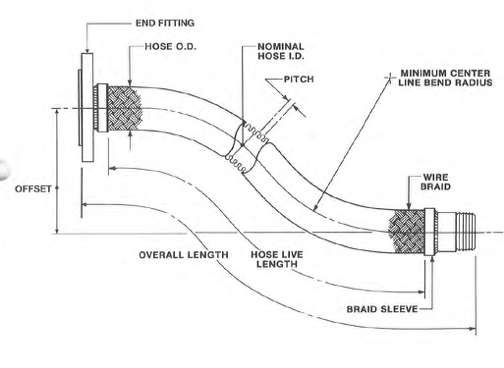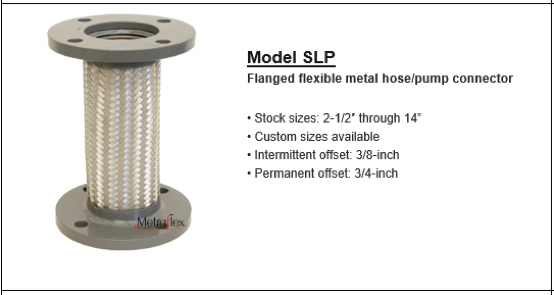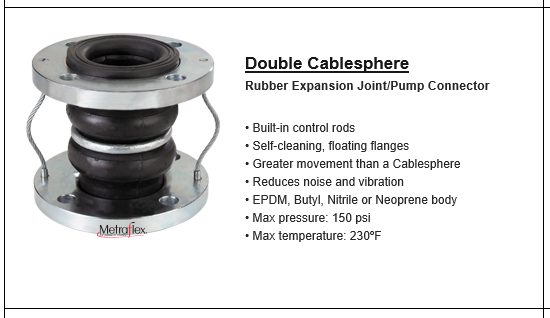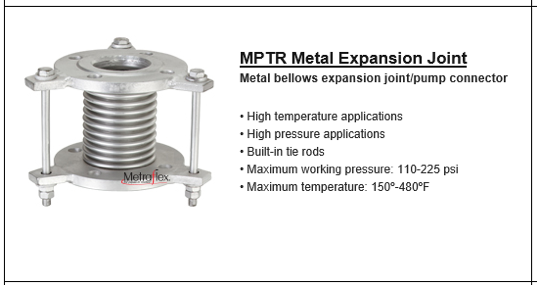 William Shakespeare may not have known anything about hydronic engineering, but a small part of his play, Romeo and Juliet, could be renamed Flexible Connectors and Expansion Joints. What is the difference between a flexible connector and an expansion joint?
William Shakespeare may not have known anything about hydronic engineering, but a small part of his play, Romeo and Juliet, could be renamed Flexible Connectors and Expansion Joints. What is the difference between a flexible connector and an expansion joint?
Plumbing and hydronic products also describe what they do if you just reverse the words. An example: air separators will separate air, steam traps will trap steam, and pressure boosters will boost pressure. It is not surprising that expansion joints are joints that handle expansion. It is also not surprising that flexible connectors connect pipe to equipment – flexibly. Then how come some flex connectors are called expansion joints in the manufacturer’s literature?
Pump Connectors
William Shakespeare penned the words “a rose by any other name would smell as sweet.” Juliet wanted Romeo to know that if he was named something else, he would still be her love. What can this possibly have to do with my blog today?
In the case of pump connectors, it does not matter what the thing is called. What matters is that the engineer matches the product with the need. Any flexible connector will move a little bit laterally.
The photo above is from our Monday Morning Minute on Hydronic Pump Piping. The offset is lateral movement. You can get some lateral movement from rubber flexible connectors, stainless steel hose and braided flexible connectors, and stainless steel bellows type flexible connectors. This lateral movement gives the contractor some tolerance when connecting the pipe to the equipment. It also gives a little “wiggle” if the equipment is vibrating but that is moot since we don’t want pumps or chillers “wiggling”.
What hose and braid flexible connectors can’t do is give any appreciable axial, or up and down, movement. That is what an expansion joint does. It is also why rubber flexible connectors are often referred to as expansion joints. Rubber flexible connectors offer a small amount of offset coupled with some axial movement.
Let’s mention one often overlooked – the stainless steel flexible connector. The Metraflex MPTR is a bellows type flexible connector or expansion joint. It offers some lateral movement, a nice amount of axial compression, and even some extension. It is also 6” face to face, which saves the space in the vertical pump piping. It can reduce fears that some have about rubber flexible connectors.
Specifications vs. Submittals
Many specifications have a section that includes expansion joints, rubber flexible connectors, hose and braid flexible connectors, and even the metal bellows style. Most submittals are all about hose and braid connectors. Why? The plans simply say flexible connectors and the hose and braid connectors are often the least expensive.
Use section 3.0 of the AIA specification style to identify where you want which type of expansion joint or flexible connector. Also, be careful of a different specification in different sections. There is often a long specification under the vibration section 230548 specification and then a short hose and braid specification under hydronic piping section 232113. Once you decide what connector you want and where, take a moment to make sure the specification matches your intent.
If you would like another set of eyes, our sales engineers in Michigan and Northern Ohio are ready to assist. If you are in other states, contact your Metraflex representative for more information.
Discover more on the: Hydronic Expansion Joints Series:
Hydronic Expansion Joints (Part 1): The Need for Expansion Joints
Hydronic Expansion Joints (Part 2): It’s All About the Guides





